DDR3-2000+ Memory Kits - Fast but Flawed
by Rajinder Gill on July 8, 2009 12:15 AM EST- Posted in
- Memory
CAS Fashion Question: Is CAS 8 the new CAS 7?
We’ll start off with Super Pi to check frequency scaling. We set a memory voltage ceiling of 1.85V, which we think is more than most users will ever push into their Hyper based modules for benching. For 24/7 use, we do not suggest more than 1.72V based on conversations with the memory suppliers, actually less is more in this case.
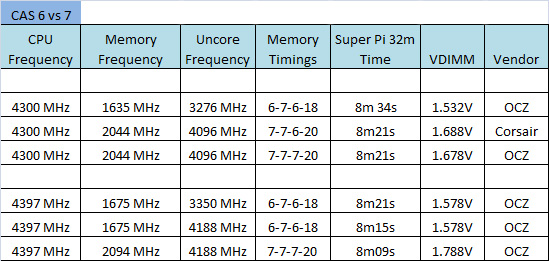
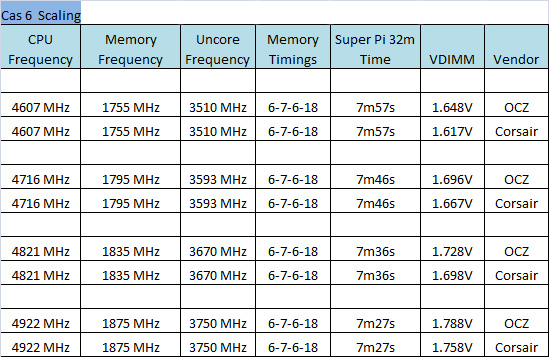
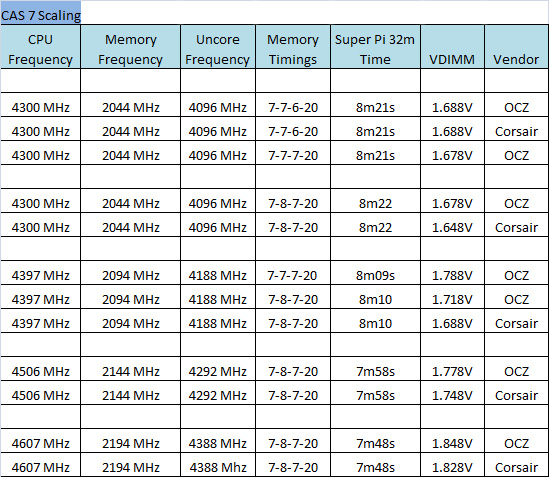
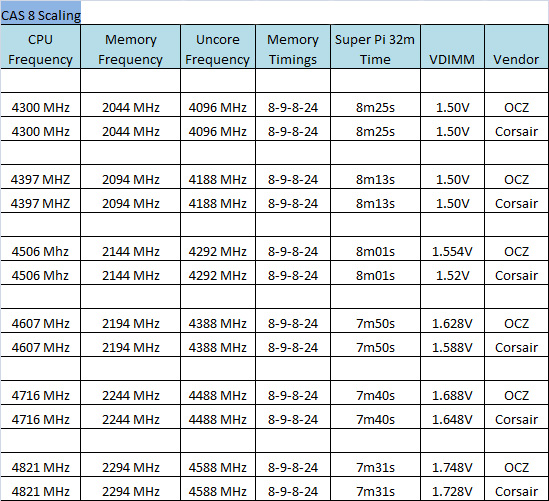
The Corsair modules offer just slightly better voltage/frequency scaling in the Super Pi results. We attribute most of the differences here to the variances in the kits we received. The original Corsair kit actually generated slightly lower results when it came to maximum memory clocks. Our first Blade kit was marginally better when it came to voltages at like settings. The kits tie where the CPU is the limiting factor once we are over 2300MHz with CAS 8-9-8 timings.
Peak gains when using a higher memory bandwidth are certainly apparent between CAS 6 and CAS 7. With the Uncore multiplier at 16X, CAS 6 on the 2:8 memory ratio loses around 10 seconds to CAS 7 running at 2094 MHz with an Uncore multiplier of 20X. In case you’re wondering why there are no Corsair results at CAS 7-7-7 timings, it because out of the six modules we have in the labs, none will post consistently over 1950MHz with CAS 7-7-7 timings at this point. This is irrespective of VDimm settings or swapping the modules around in the slots as we notice early deterioration setting in at this point. In fact, a couple of the modules are already near a 1500MHz limit.
Oddly enough 7-8-7 or 8-9-8 timings still work fine on several of the Corsair modules at 2000, provided we put the module into the right slot to initialize the POST process. This simply comes back to the modules deteriorating through the course of our testing. Our OCZ Blade modules can be plugged in at these timings and still POST although we have started to encounter a few module swap requirements. We are not ruling the board or voltages completely out of the equation just yet, but based upon previous testing results we do not believe the situation is specific to either variance as one of our OCZ modules already failed at stock voltages.
Even a matched Uncore multiplier at CAS 6 is not sufficient to eclipse the CAS 7 2094 MHz 32m time. The Everest results for these 2 test points do confirm the performance advantage of having higher bandwidth and 2ns faster access latency.
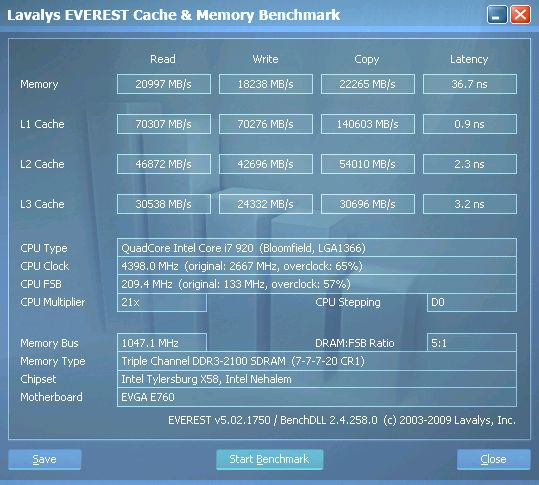
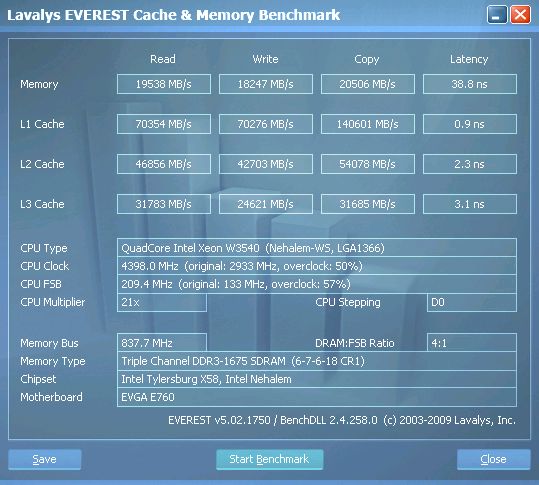
Perhaps more interesting than the raw gain versus memory frequency is something we found out during our tests of the EVGA Classified a couple of months ago. The light capacitive load of the Hyper modules allows higher overall processor clocks than memory kits based on Micron or Samsung based parts, reliability issues withstanding of course.
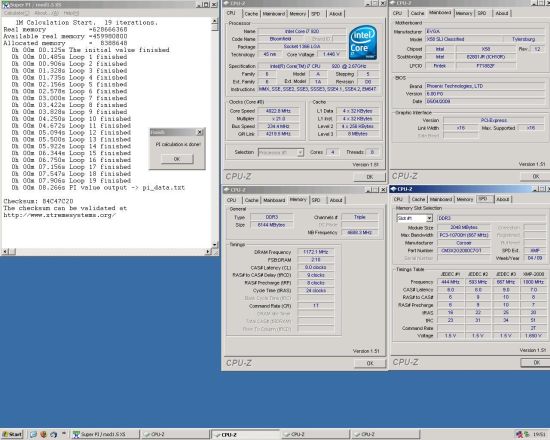
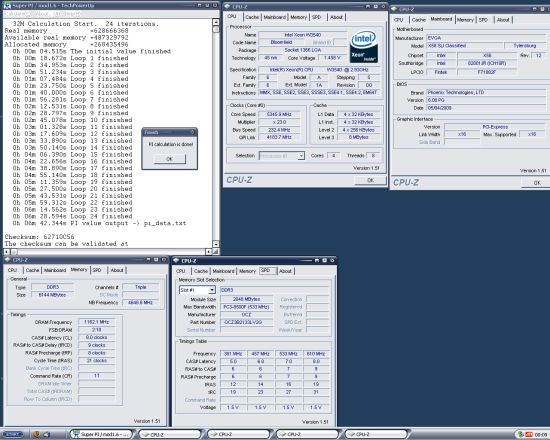
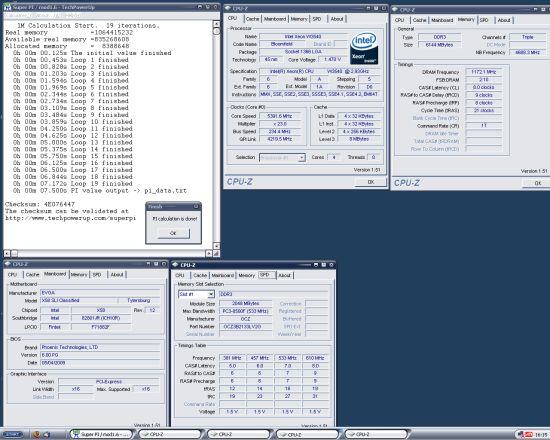
CAS 7 is likely to be the preferred latency setting for most benchmarks, providing enough flexibility for scaling processor clocks right to the limits of the silicon, especially when using locked multiplier CPU’s. Running either set of modules at CAS 8 to around 2250MHz does allow the use of slightly more conservative memory voltage at the cost of the low acess latency of CAS 7-7 timings around 2100MHz. We added a couple of maximum frequency runs above just to show how it all adds up.
















13 Comments
View All Comments
blyndy - Wednesday, July 8, 2009 - link
"Final words...a select few users seem to have a bit of luck and have had no failures at all, even after months of usage.
"
If it fails 'after months of usage', you might have gotten some use out of it, but it is still a faulty unit.
Rajinder Gill - Wednesday, July 8, 2009 - link
That depends on every single IC sold being defective. Word is that it's some batches - not all.mit1978 - Wednesday, January 12, 2011 - link
how many voltages is necesary to rise 2000mhz with kingston hyperxt1 2000mhz and rampage 2 extreme for corect runningin my opinion its to much voltage for qpi 1.4-1.5v
wait for answer.